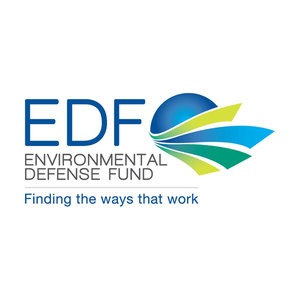 I am not a scientist and I don’t play one on the blogosphere. My background is in grassroots organizing and communications. And for the last decade, I have been honored beyond words to be part of Environmental Defense Fund. I get to wake up every morning thinking of ways to advocate for my two young kids and their generation’s future by mobilizing public support for solutions to the world’s biggest environmental threats.
I am not a scientist and I don’t play one on the blogosphere. My background is in grassroots organizing and communications. And for the last decade, I have been honored beyond words to be part of Environmental Defense Fund. I get to wake up every morning thinking of ways to advocate for my two young kids and their generation’s future by mobilizing public support for solutions to the world’s biggest environmental threats.
And no threat is more urgent than climate change, a fact that has inspired EDF to make solving the climate crisis our No. 1 top priority issue for as long as I’ve been here.
Right now, one of the most important climate concerns is the issue of fugitive emissions — specifically methane leaking from the natural gas supply chain. As most people who follow the climate debate already know, methane is a major climate pollutant 72 times more potent than carbon dioxide over a 20-year period. So, tracking methane leaks and venting is a very big deal — if we get this wrong, climate consequences could be devastating.
The problem is that right now there is very little hard data to go on to say with any confidence what the extent of the natural gas industry’s methane leakage problem is, or even where in the supply chain methane is leaking.
The old maxim that you can’t manage what you don’t measure inspired EDF to look for ways to advance the dataset. So, we got to work (it’s what we do). And we partnered with the University of Texas and an independent scientific advisory panel to begin compiling hard data from hundreds of wells across the country.
Let me pause a second to acknowledge that yes, we also worked with natural gas companies on this study. And, yes, I understand that for some that fact alone casts a shadow over the results of this scientific study. But there is a very good reason we did so — it was the only way to get access to the wells to collect direct data. Without the participation and cooperation from these companies, getting the data would have been impossible.
This week, the Proceedings of the National Academy of Sciences published the first of 16 EDF-coordinated studies examining the problem. The main takeaway is that some natural gas drilling operators are successfully deploying technologies and strategies, called green completion, to minimize methane leakage from production. They are doing this because a new EPA regulation says they have to. This should be inspiring news — technology and smart regulation can work to solve a major environmental challenge.
But — and this is very important — those green completion requirements need to be extended to shale oil and combined oil-and-gas wells, which are not covered by EPA’s New Source Performance Standards. And emissions for other production activities — liquids unloading, pneumatics, compressors, etc. — came in way higher than previous estimates.
So, there’s PLENTY of work to be done. That’s the takeaway. That is what the data show. Now, we, as activists and organizers, have a mobilizing mantra — we have work to do and we have hard data to help drive the debate and set clear goals.
I understand that some environmental allies are already reacting skeptically to this first study. I’ve been around progressive politics and environmental activists long enough to know that there are always disagreements — about strategy, about policies, about when and with whom to cut deals, about the best ways or organize and build movements. It’s par for the course.
But the climate crisis is far too serious to let ourselves get distracted. I encourage people who care about the climate crisis to stay focused on the task at hand. If there are specific concerns about the science behind the study, let’s air them out and let’s continue to learn from each other. As I said, I’m not a scientist, but I know enough about science to understand that it is an iterative process and there are always lessons to learn.
As a climate activist and organizer, my hope is that we can all use the data from this and the next 15 reports to come together and advocate for the strongest possible standards and to promote the use of effective environmental technologies along the natural gas supply chain. That’s our mission, that’s our goal. And of course reducing methane emissions isn’t enough. We have to double down on carbon pollution — which is why the new EPA power plant rules are so important. But that’s for another day.
One more thing: We at EDF realize how sensitive the natural gas issue is for millions of Americans. I can’t count the number of times our team has responded to natural gas questions from members and activists. And our natural gas team well understands the pain, frustration, and powerlessness many families feel when the natural gas industry comes to town and plays hardball with a community’s rights to breathe clean air, drink safe water, and even to simply participate in decisions about what happens in their backyards.
This isn’t some academic exercise for us. Protecting communities and our shared environment is the singular reason EDF has been working so hard to get the rules right on natural gas extraction and to hold the industry accountable. And that’s why we are engaged in these studies — to build the data and science and to inform the debate and guide policymakers. That is our only motive in this work.
I once heard a quote from environmental activist Nick Carter who said (paraphrasing): “If you see a problem and no one else is working on it, you’re elected.” That makes a lot of sense to me. At EDF, methane leakage is one of those problems. Getting the rules in place to accelerate clean, renewable energy is another. For more on that work, go to www.edf.org/energy.



